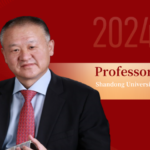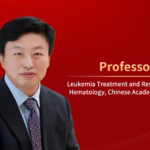The Fourth China Hematology Development Conference was held in Tianjin from January 5th to 7th, 2024. Themed "Broadening Hematology, Healthcare, and Wellness," the conference focused on the core development directions in hematology, addressing significant issues in basic hematology research, translation, and clinical diagnosis and treatment in the new era. On this occasion, Professor Gang An from the Institute of Hematology, Chinese Academy of Medical Sciences (CAMS), and Blood Disease Hospital, CAMS, shared recent advancements and future trends in CAR-T cell therapy for Multiple Myeloma (MM) in an interview.
“Oncology Frontier – Hematology Frontier“: CAR-T cell therapy has been a hot topic in hematology in recent years. Could you discuss the current status of CAR-T cell therapy in the field of MM? Besides targeting BCMA CAR-T cell products, what are other hot new targets in the MM field?
Professor Gang An : CAR-T cell therapy is an effective treatment for advanced MM. Globally, there are three BCMA CAR-T cell products on the market: ide-cel, cilta-cel, and equecabtagene autoleucel. These products are derived from mouse, llama, and fully human antibodies, respectively, and have shown excellent efficacy in patients with relapsed/refractory MM.
The BCMA target is highly specific and abundant, playing a vital role in plasma cell survival. The currently approved CAR-T products mainly target BCMA. Despite the promising efficacy of BCMA-targeted CAR-T cell products, many patients still relapse after treatment, so there’s a pressing need to explore other targets. GPRC5D is an emerging therapeutic target extensively researched by Professor Huang He and Professor Xu Kailin in China and internationally. The efficacy of this target is comparable to BCMA-targeted CAR-T products. GPRC5D can also be developed into bispecific antibodies, such as Talquetamab-tgvs targeting GPRC5D/CD3, which has received accelerated FDA approval for treating adult patients with relapsed/refractory MM. Other targets, like FcRH5 and CS1, are also being explored. I believe that as we continue to discover more targets in the MM field, we will eventually achieve the goal of curing MM patients.
“Oncology Frontier – Hematology Frontier“: In the context of emerging new drugs and therapies, traditional treatments should not be abandoned. Combination therapy could bring better efficacy for some patients. What is your view on the relationship between ASCT and CAR-T cell therapy? What are your thoughts on advancing CAR-T cell therapy and other new treatments?
Professor Gang An : While immunotherapy, represented by CAR-T cell therapy and bispecific antibodies, is increasingly important in MM treatment, traditional treatments should not be neglected. I believe their combined application could be a better treatment choice. For instance, when CAR-T cell therapy is approved for first-line treatment, we could consider using treatment regimens based on bortezomib, lenalidomide, or carfilzomib, and lenalidomide to reduce tumor burden and enhance the safety of CAR-T therapy. Moreover, patients relapsing after CAR-T treatment would also require treatment with small molecule compounds.
Additionally, in clinical practice, combining Autologous Stem Cell Transplantation (ASCT) with CAR-T cell therapy for treating MM patients can be considered. For example, stem cells could be infused on day 0 and CAR-T cells on day 3, leveraging the advantages of both ASCT and CAR-T therapies, which may bring more benefits to MM patients. Professor Fu Chengcheng from The First Affiliated Hospital of Soochow University has conducted related research on this combined approach, and our center is also undertaking similar studies.
Currently, CAR-T products are approved for treating patients with third-line or higher relapsed/refractory MM. Researchers are considering whether early application of CAR-T products could improve patient outcomes. Hence, various hospitals, centers, and companies are conducting clinical studies on advancing the use of CAR-T treatment, such as the CARTITUDE-5 and CARTITUDE-6 studies. Our center has also initiated several clinical studies to explore the possibility of advancing CAR-T therapy. I believe that through the active research and exploration by various institutions, more patients will benefit.
“Oncology Frontier – Hematology Frontier“: In view of the current status and unmet needs of CAR-T cell therapy in the MM field, many domestic centers have embarked on active exploration. Over the next 5-10 years, what issues and directions do you think CAR-T cell therapy needs to focus on?
Professor Gang An : While advancing the use of CAR-T therapy, we should also pay attention to standardized management throughout the CAR-T therapy process and management of side effects. On November 28, 2023, the U.S. Food and Drug Administration (FDA) announced that T-cell lymphoma had been observed in a small number of patients receiving CAR-T therapy. Although this issue requires further research for confirmation, it reminds us of the dual nature of CAR-T therapy. Clinicians are now able to manage early side effects such as Cytokine Release Syndrome (CRS) and neurological toxicity effectively. However, more attention should be paid to long-term side effects like cytopenia, which require cautious handling. Many patients experience a sustained decline in blood counts after CAR-T treatment, and some cannot recover even after 90 days, making them a high-risk group. Therefore, whether stem cells should be prepared before patients receive CAR-T therapy to prevent side effects is a question that clinicians and researchers need to explore further.

Professor Gang An
- Chief Physician, Associate Professor, Doctoral Supervisor
- Principal Investigator (PI), National Key Laboratory of Blood and Health
- Youth Director, Chinese Anti-Cancer Association
- Secretary-General, CSCO Multiple Myeloma Expert Committee
- Vice Chairman, Second Youth Committee of Hematologic Oncology, Chinese Anti-Cancer Association
- Member, Youth Committee of the 11th Committee of Hematology, Chinese Medical Association
- Member, Hematologic Disease Transformation Committee, Chinese Anti-Cancer Association
- Member, Oncology Nephrology Committee, Chinese Anti-Cancer Association
- Member and Secretary, China MM (Multiple Myeloma) Research Alliance
- Member, Tianjin Anti-Cancer Association’s Committee on Geriatric Oncology
- Member, Tianjin Genetic Counseling Committee
- Graduated in 2003 from Shandong Medical University; earned Master’s and Doctoral degrees from Peking Union Medical College Graduate School between 2006 and 2011; Postdoctoral fellow at Harvard University’s Dana-Farber Cancer Institute from November 2013 to June 2016
- Published over 30 SCI papers as first author or corresponding author in journals like Blood, Leukemia, Clinical Cancer Research, Haematologica, Blood Advances, The Journal for ImmunoTherapy, with a total impact factor exceeding 200; Chief editor of the monograph “Internal Medicine: Difficult Cases – Hematology” (People’s Medical Publishing House); Co-translator of “Williams Hematology Handbook 9th-10th Edition”; Principal investigator of three National Natural Science Foundation projects
- Recipient of the 2020 China Young Oncologist Award
- Selected for the first level of Tianjin’s “131” Innovative Talent Training Project
- Selected as a high-level talent in the Tianjin Health and Family Planning Industry, part of the Young Medical Pioneers Training Program


